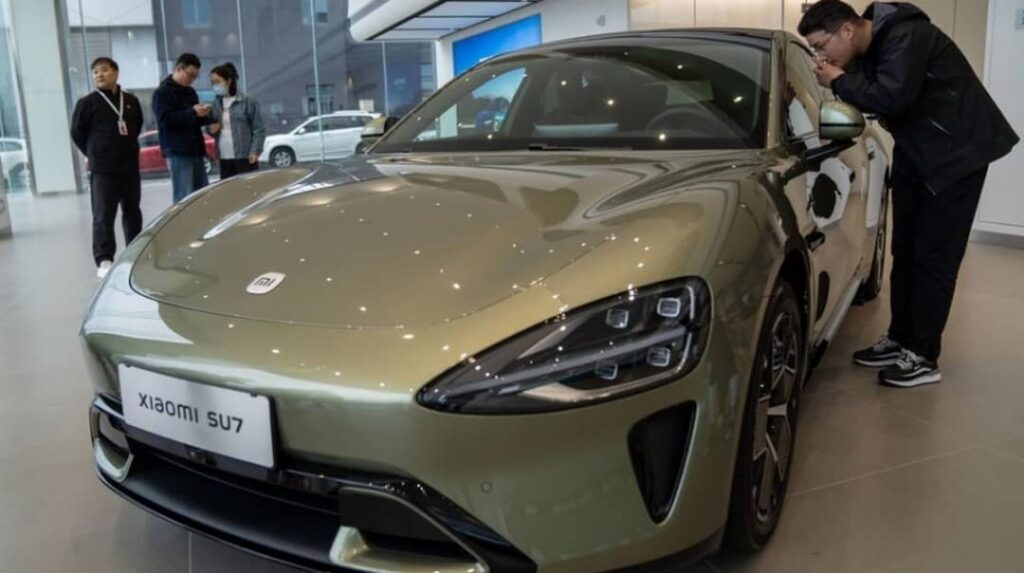
Chinese smartphone manufacturer Xiaomi is making waves in the automotive industry with its announcement to launch its first electric vehicle (EV), the Speed Ultra 7 (SU7), and commence orders on Thursday.
Competitive Pricing and Market Positioning
Xiaomi’s CEO, Lei Jun, revealed that the SU7 would be competitively priced below 500,000 yuan ($69,186; £54,836), signaling a direct challenge to established rivals such as Tesla and BYD. With its entry, Xiaomi aims to capitalize on its existing market presence and technological expertise to carve out a niche in the competitive EV landscape.
Synergy with Existing Product Ecosystem
One of Xiaomi’s key strategies is leveraging the synergy between its smartphones, laptops, and other devices, offering a shared operating system that is expected to resonate with its extensive customer base. This integrated approach could provide a seamless user experience and enhance brand loyalty among consumers.
Market Dynamics and Strategic Investment
As global EV sales growth has slowed, Xiaomi’s foray into the automotive sector underscores its strategic investment of $10 billion (£7.9 billion) over the next decade. This move reflects the company’s confidence in the Chinese EV market’s maturity and stability, buoyed by robust battery supply chains and an expanding charging network.
Navigating a Competitive Landscape
Xiaomi enters the EV market amidst intensifying competition and price wars, exemplified by Tesla’s aggressive pricing strategies and BYD’s dominance as the world’s top-selling EV maker. With authorities cautiously approving new entrants to manage market saturation, Xiaomi’s approval signifies its potential to disrupt the status quo.
Challenges and Opportunities Ahead
While Xiaomi’s venture into EVs symbolizes confidence in its brand relevance, challenges loom, as evidenced by Apple’s recent cancellation of its EV plans. However, Xiaomi’s focused approach on the Chinese market, contrasted with Apple’s broader global perspective, highlights differing strategic outlooks and market assessments.
Global Regulatory Dynamics
Beyond market competition, global regulatory dynamics pose additional complexities. Beijing’s dispute settlement proceedings against the US and the EU’s investigation into alleged Chinese government subsidies reflect geopolitical tensions and trade frictions shaping the EV landscape. Amidst these challenges, Xiaomi’s entry signifies both opportunity and risk in navigating evolving regulatory frameworks.
Future Outlook
As Xiaomi prepares to launch its inaugural EV, attention shifts to its market reception and long-term viability. With Tesla’s impending delivery numbers and shifting consumer spending patterns amidst economic uncertainties, Xiaomi’s success hinges on its ability to deliver innovative, competitively priced EVs while navigating dynamic market forces and regulatory landscapes.
Subscribe to Follow Global Trends for daily global news. To Advertise, send a mail to advertise@followglobaltrends.com
BY: OLOWOOKERE EMMANUEL


